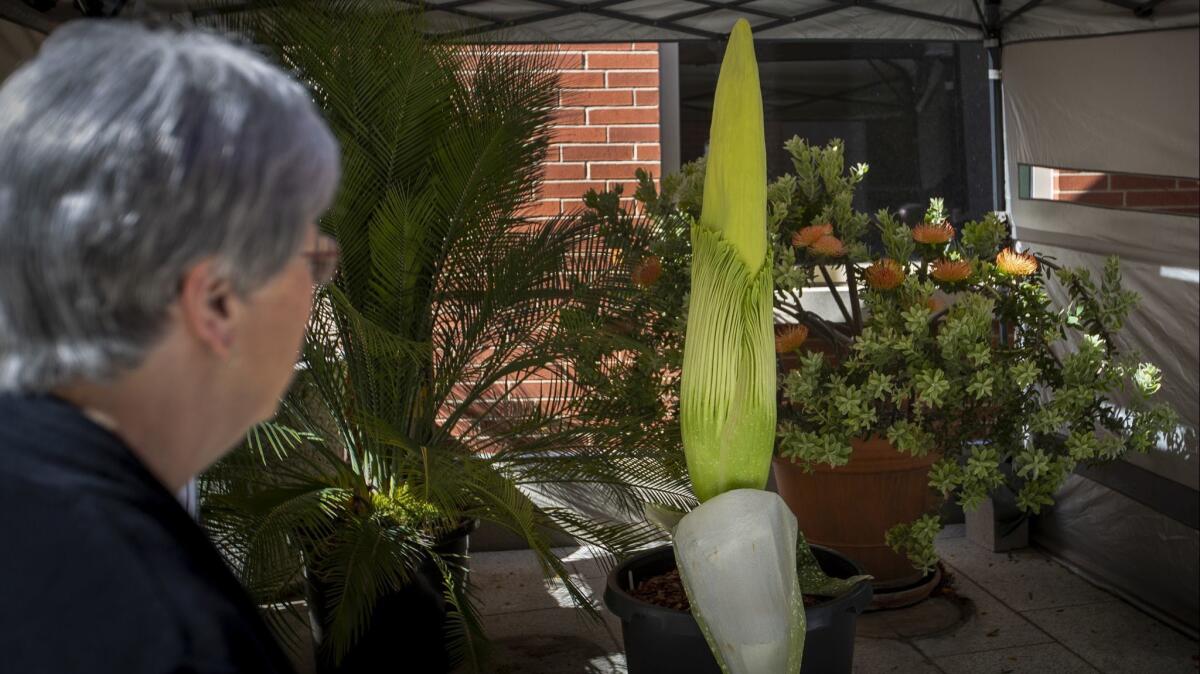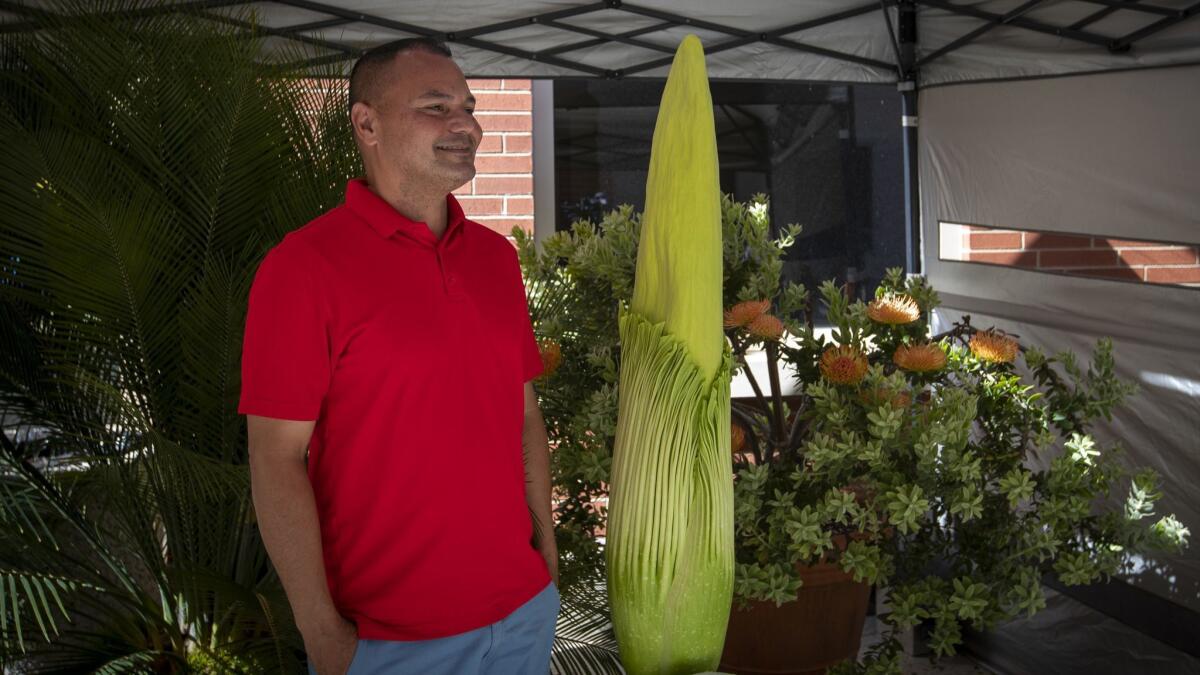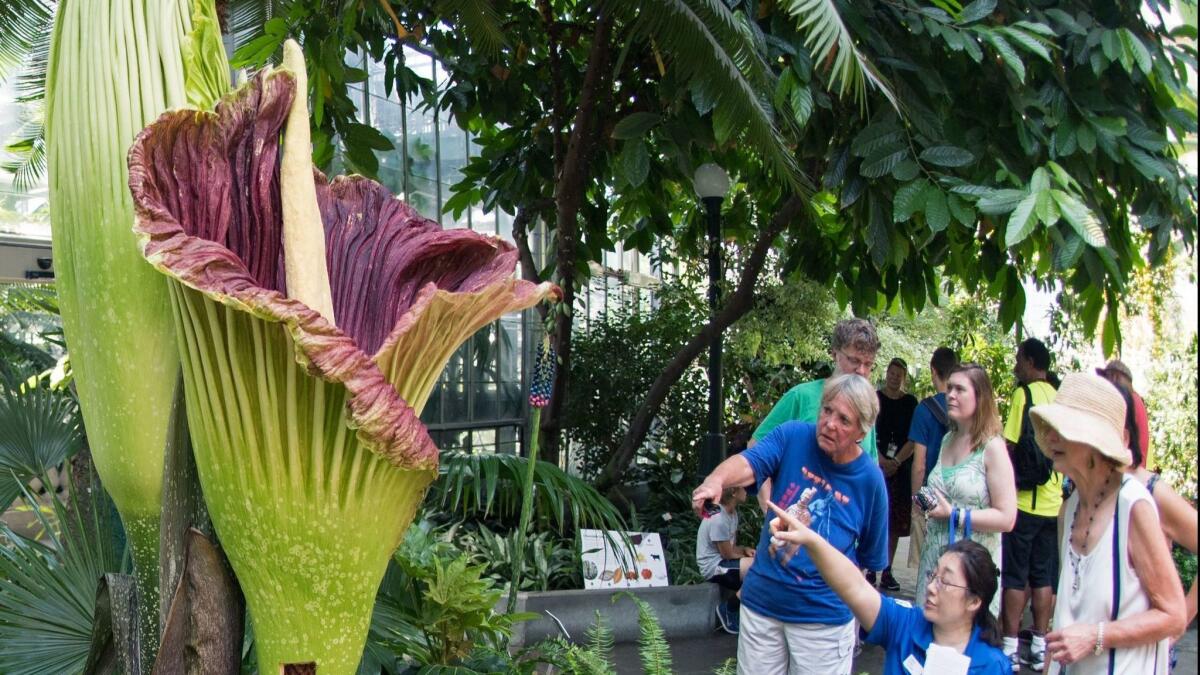Rare corpse flower ready for stinky appearance at Cal State Long Beach

What’s 4 feet tall, rare and stinky all over? It’s the giant corpse lily, expected to bloom this week at Cal State Long Beach.
The notoriously pungent flower is expected to unfurl by Friday, marking an appearance that occurs only once every five to 10 years. The bloom, when revealed, will showcase a colorful maroon interior and give off an overwhelmingly putrid smell that is often compared to rotting meat.
The Amorphophallus titanum, which means “giant misshapen phallus,” is native to the rainforests of the Indonesian island of Sumatra and is also known as a titan arum. The plant is billed as the world’s largest flower but is technically an “inflorescence,” or a cluster of flowers. When it blossoms, the plant can stand more than 6 feet tall and open to a diameter of 4 feet.
The blooms usually last only about 24 hours, during which time the plant heats itself to more than 90 degrees — approximately the temperature of a human body — in order to release a chemical scent that attracts insects for pollination.

Brian Thorson, the botanical curator and botany technician at Cal State Long Beach’s biological sciences department, said the maroon colored petals make the plant look “like a slab of flank steak,” imitating rotting meat to attract insects.
Thorson nicknamed the campus’ corpse lily “Phil,” after Dr. Philip Baker, a late professor of botany at the university.
In anticipation of the bloom, Thorson has a tent display to monitor the tall, green plant and answer questions from onlookers. He estimated that about 200 people have visited the booth nestled between the Molecular and Life Sciences Center and the Hall of Science since it went up Tuesday morning.
“The whole purpose of putting this out here is to generate interest and show people the value of plants outside … their living room,” he said.
MORE: Meet the Instagram gardening stars of Southern California »
Thorson said the plant is expected to bloom by Friday, but he is hopeful it will happen Thursday morning. He said it should take about two hours for the petals to completely unfurl. He said the plant may be delaying its bloom because of cooler temperatures in Long Beach, but that its time warming in the campus greenhouse should help the process.
The plant will be on display at the campus throughout its bloom. The campus is posting updates on Twitter @CSULBSciMath.
Thorson acquired the plant in 2009 when he bought two seedlings that were about 2 years old. A photo of the other grown corpse flower, named “Laura,” is on display at the tent.

The Huntington Library, Art Collections and Botanical Gardens in San Marino was the first California institution to bloom the corpse flower, in 1999. The gardens now house 44 of the plants, which remain one of the Huntington’s biggest attractions.
In 2018, fans of the smelly plant eagerly anticipated the bloom of a corpse flower nicknamed “Li’l Stinker” at the Huntington with an Instagram countdown and live broadcasts on Facebook.
The plant failed to bloom, but it still garnered a steady stream of visitors.
More to Read
Start your day right
Sign up for Essential California for news, features and recommendations from the L.A. Times and beyond in your inbox six days a week.
You may occasionally receive promotional content from the Los Angeles Times.







